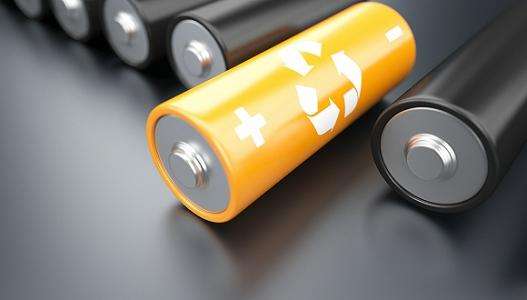Lithium Battery Packs for Electric Bikes – Comparison and Making
APR 10, 2020 Pageview:1858
Electric bikes are the new kids on the block when it comes to cycling in this modern age. These bikes can run on battery power and therefore, this article serves to discuss the possibility of building your own pack for your bike.
Which battery is best for electric bikes?
Lithium-ion batteries are considered the best battery types for your electric bike. This is because they require less maintenance and also pack in a lot of energy-densities required to power this machine. They are also light and therefore suitable for the sizes of electric bikes.
Can you make a lithium battery pack for electric bikes?
Electric bikes batteries are mostly made out of lithium-ion batteries and one of the most common type used in these bicycles are 18650 cells. One would thing that making a battery pack for such an invention as the electric bike is an industrial responsibility alone. People normally associate such practices with large manufacturing plants and think that a DIY process is impossible.
In the real sense, making such a battery pack requires a few simple steps to be followed in their correct order and can be done at home. Also, the prices for the tools needed are fair and that of the 186500 cells get better as you buy more of them.
How do you make a lithium battery pack for electric bikes?
For you to make your very own electric bike lithium battery pack, you would need to acquire the following tools:
Lithium cells (preferably 18650 cells)
BMS (Battery Management System)
Nickel strip
Voltmeter
Foam sheet
Hot glue
Miscellaneous wires/connectors
Soldering iron & solder
Lithium cells
Most of the 18650 lithium-ion calls are usually around 3.7V each and therefore, you are required to wire them in a series connection. Doing this will enable you to get the total voltage of the battery pack that you are about to build.
BMS
A BMS is needed to monitor the cells during charging and discharging processes. The main function of the Battery Management System is to protect the cells from being excessively drained below the voltage point or being overcharged. When buying your BMS, you need to consider two main essential factors and they include the voltage as well as the current rate. For example, if you intend to build a 37V battery pack, you would require a 37V BMS. Remember to check the discharge current that you would want your battery to handle.
Nickel strip
Be sure to get yourself pure nickel strips and not the nickel plated steel strips that come at a cheaper price. These strips would be used to join the cells together.
Heat shrink tube
To seal your batteries into a pack, you will need a heat shrink tube with a large diameter.
Spot welder
When making a lithium battery pack out of single cells such as the 18650 cells, you need a spot welder. This tool would help you solder the cells together but needs to be handed gently as it generates a lot of heat that can damage the cells.
You can then follow the following steps to begin your experiment.
1.Determine your battery pack’s size and shape
How many cells are you looking forward to using? What is the size and shape of the battery pack that you intend on using? You can look for a small container or bag that also serves as an insulator and find out how many cells can fit in it. You can trace the shape of the container on a piece of drawing paper and arrange the cells upright on that drawing.
This can greatly help you with the wiring of the cells. Try not to squeeze in too many cells in the name of accommodating all of them. Use the number of 18650 cells that efficiently fit into the container.
2.Plan out the wiring of your cells
Find the best order in which you can lay out your cells on in the container using the piece of paper as the prototype. Also, design the best wiring system that would ensure that all the cells are connected effectively without any chances of shorts. A parallel connection is preferred in this project.
3.Ensure every cell has the same voltage
Using the voltmeter, test the cells and ensure that each one has the same voltage as the other. There is a possibility that, due to self- discharge, the cells differ by a few hundredth voltages. However, connecting them in parallel may help you try and equalize the voltage.
4.Join the cells together
Using the hot glue and the spot welder, build your battery pack by joining the cells together. You can decide to glue the whole pack together from the start and weld it at the end.
5.Ready your connectors for the charging and discharging processes
You can prepare your connectors and add them to the battery.
6.Connect the pack to the BMS
Before connecting the BMS to the pack, it would be best if you connected the wires to it. Normally, there are three wires that are connected to the BMS and these include the C-, P-, and the B-. In this case, the C- stands for the charging negative, the P- illustrates the pack’s negative and the B- indicates the battery’s negative.
Solder these wires to the board in their rightful positions. You can then wrap the BMS in a insulation tape and thereafter, hot glue it to the pack with the sheet of foam underneath. The foam serves as a shock absorber and prevents shorting between the bottom side of the BMS board and the cells.
7.Put the BMS connections
Solder all the cell wires for the BMS and thereafter, add the main charge and discharge wires.
8.Wrap the battery pack in foam
Using the large sheet of foam, wrap the built pack to give them more protection. You can use tape to seal the foam wrap but be sure that the wires aren’t sealed inside.
9.Heat shrink the pack
Take the heat shrink tube and wrap it around the pack and using a heat gun with low heat, cover the entire pack on both sides. You can alternatively use a hair drier if the heat gun seems to generate too much heat. If you want, you can also add a handle to the pack.
10.Final touch
Once you’re done with the pack, you can fit it back into the bag or container and installing it onto your electric bike.
Final words
Experts suggest that you should charge your battery at least once a month if you don’t use the bike as much. However, using the electric bike regularly tends to make the battery stronger.
Leave Message
Hottest Categories
-
Hottest Industry News
-
Latest Industry News












